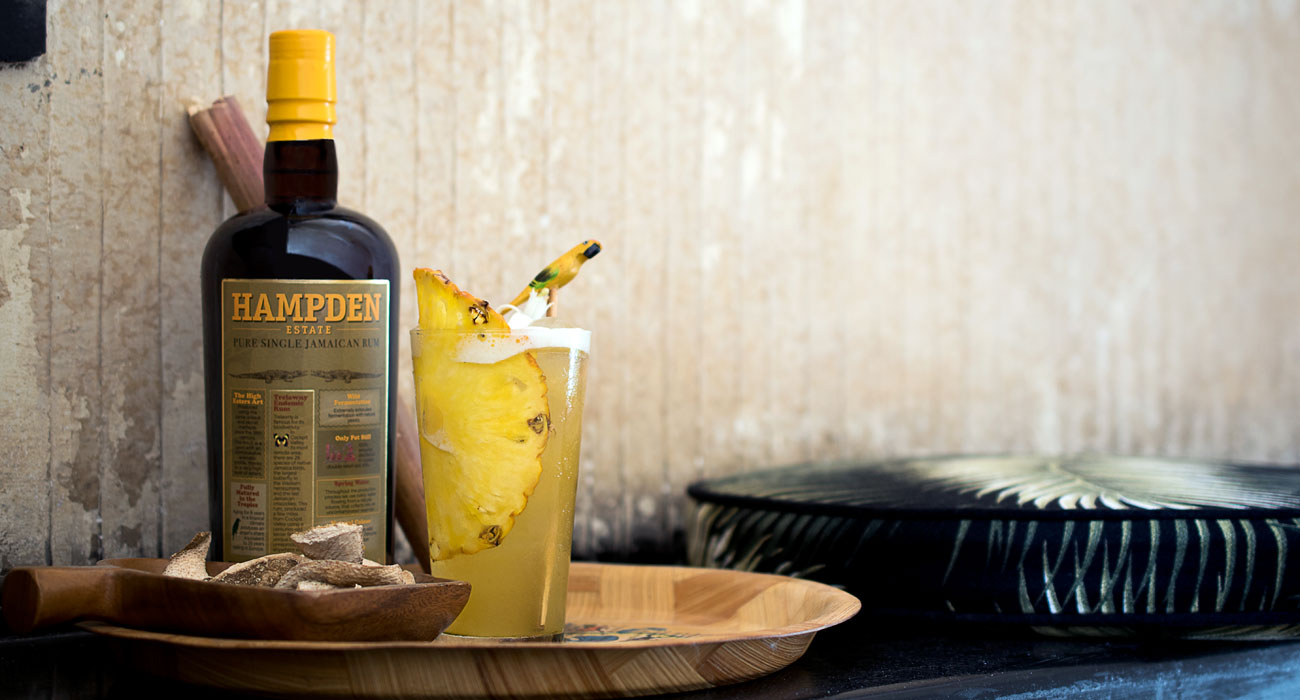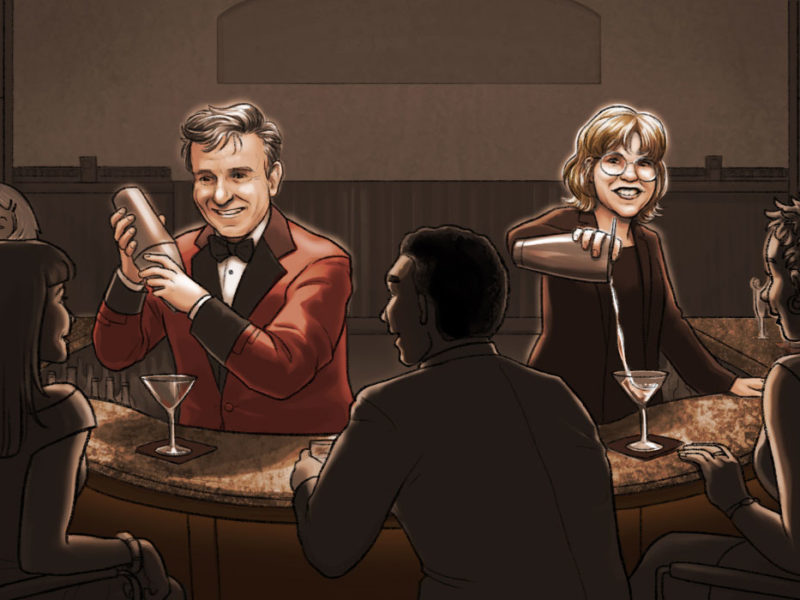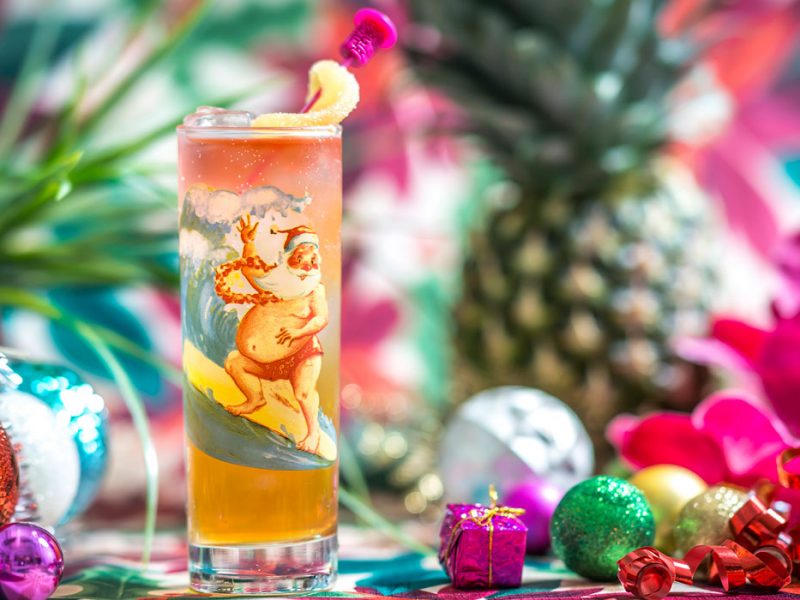Though it was founded in 1753, Jamaica’s Hampden Estate distillery only this year issued the first aged rum under its own brand name. Now is certainly a good time to bring a Jamaican pot still blend to market, as interest in this family of styles is at its highest point in a century. Hampden’s new rums build on their previous branded but unaged product, Rum Fire, and follow the first branded initiative from fellow Jamaican producer Worthy Park. This event, while notable in itself, also focuses attention on the importance of brands to the spirits industry.
Branding hovers behind what we talk about when we talk about rum, but it is rarely addressed as a topic on its own. What is a brand and why is it important? How has the role of branding changed over rum’s long history? And what obstacles prevented a sugar plantation that’s been around for a quarter of a millennium from developing its first rum brands until today?
To start with some foundational definitions, I spoke to Cynthia Sterling, creative director at Affinity Creative Group, who has focused on branding and packaging design for wine and spirits for over twenty-five years. “We use a lot more than our taste buds to evaluate the quality and style of a product,” she noted.
“People are story-oriented. That’s how we learn and that’s how we absorb information,” Sterling said. Branding is “that sense of credibility, authority, history, and story” that “increases our quality experience and the perceived value of the product.”
Aging itself conveys the feeling of “coming from a long tradition of people who have developed the craft of making that product,” Sterling said, which lends aged spirits “that sense of history.”
The Hampden distillery has long produced unaged spirits for bulk sale as well as use in flavorings and fragrances. The current owners acquired it ten years ago, intending to develop Hampden into a producer of its own brands.
“My grandfather, Lawrence Hussey, was of the opinion that if Hampden rum was so highly valued in the bulk rum space, it only made sense to barrel as much as we could,” Christelle Harris, Hampden’s marketing director, told me. “This was the first time Hampden Estate was ever blending its own aged rums. It’s the first time Hampden had its own tropical aged on-estate rums to blend.”
Harris expounded on her tripartite categorization of rum brands, depending on their origin: those that are “pure marketing muscle,” those emanating from independent bottlers, and those owned by the rum producers themselves.
Anyone can create a brand on its own, Harris noted, without a significant connection to the underlying product. “Many brands claim to be something that they’re not, painting beautiful marketing messages that are far from authentic. But you don’t know what you’re getting!”
Above that fray operate the independent bottlers, with their “spotlight on authentic products.” Bottlers offer “hidden treasures,” but on their own terms. “They understand the value of these products, seek them out, create a beautiful product that usually appeals to a very niche market, and typically sells at a very high margin,” Harris said.
With the producer-owned brand, the producer, of course, is in control of the brand from start to finish. “While I have so much respect for independent bottlers who curate beautiful products and turn them into an extremely valued brands, there is a very important factor that is missing: that of absolute authenticity,” Harris said. “The other side of the equation is the economics of the argument.”
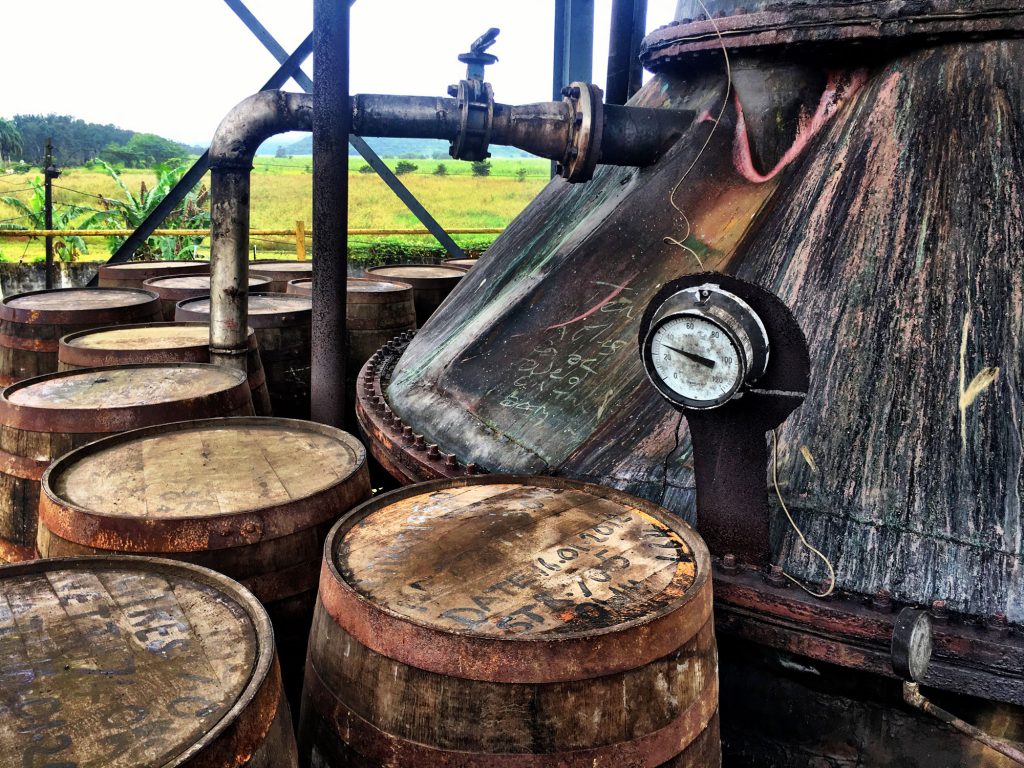
Homegrown Products
Richard Seale, master distiller at Foursquare in Barbados, pointed out that the importance of brands “is the difference between selling a commodity and a value-added product.”
“Under the colonial model, the developing world produces commodities and value is added elsewhere,” he said. “This economic imbalance is pervasive, not just in colonial countries but generally the relationship between developing countries rich in material or labor resources and the developed world.
“The only developing countries that were able to break this, in the 1970s, were the oil-producing nations who had been for decades supplying the cheap energy necessary for rapid economic development of the Western world. When the Haitians tried it much earlier, the French planted beets for sugar and forever condemned Haiti to economic poverty.”
In his recent talk on the history of rum at Tales of the Cocktail’s Tales on Tour event in San Juan, eminent booze historian David Wondrich explained that in order to change economic models, the production model also needed to change. In his view, it reached a turning point with Rafael Arroyo, the great Puerto Rican rum chemist, who began his research in the 1930s after the end of Prohibition.
“Rafael Arroyo figured out how to make clean rum,” Wondrich said. “If you wanted rum to taste great before that, the standard way to do that would be to ship it to England where it would sit in the London docks in barrels, or to Bordeaux where it would sit in the docks in barrels, for years, and some of the sweatier components would come out.” The transport to Europe was part of the “recipe.” “But Arroyo said if you ferment it clean and distill it clean, you don’t have to go through all that.” A finished product could be produced to consistent standards without the participation of the colonial powers.
The new processes, with continuous distillation rather than pot distillation, and less emphasis of aging, were born both from necessity and preference. Caribbean producers “want[ed] their own brands, but they didn’t have years and years of aged stock. All that stock was in Europe,” Wondrich said. “They had to find a way to get a rum on the market, and the common sense solution to that was to make a rum that ages quicker, to make a lighter rum, to make one that follows more the global trends of the day.” From the 1930s and increasingly so in the 1950s and ’60s, lighter spirits were popular in that big market, the United States. As imbibers turned to lighter spirits like American blended whiskey (“it was utter shit, but it was popular,” Wondrich clarified), Canadian blended whisky, or vodka, rum distillers adapted.
Merchants to Brands
In Barbados, Seale noted that “brands started around the turn of the century when plantation estates stopped crushing their own canes and sent them to centralized factories. This saw the advent of city distilleries like West India Rum Refinery and Barbados Rum Distilleries, who took molasses from the factories and sold rum in bulk to Bridgetown merchants. By a 1906 law, distilleries could only sell in bulk. City traders like ourselves, Martin Doorly, E.S.A. Field, and Alleyne Arthur all bought and blended rum under their own name. Distilleries had no brands.” In Jamaica, “Fred Myers and Wray and Nephew were also independent traders who purchased rum from distilleries. This model is also very familiar to Scotland, where most blended brands started as merchants, not distillers.”
Even a famed Jamaican mark had its origin in the merchant period. “Wedderburn, before it was a style, it was a family, and they got a reputation for their rums,” Wondrich told me. Wedderburn rums were sold in England under that name, either by the family themselves or others they sold it to. “They were one of those mercantile families that were based in London and Jamaica. So they had their own integrated supply chain.”
“If you’re truly doing rum what I call the right way, you’re doing everything,” sixth-generation distiller Roberto Serrallés opined. “You’re distilling. You’re aging and then you’re blending and bottling. The amount of working capital required to do it right is massive. I have to buy the molasses, even before I make any freaking rum. It’s very capital-intensive and that is a massive barrier to entry.” With declines in the Caribbean sugar industry, this has historically meant fewer, rather than more, producer-owned rum brands.
“There are people who specialize in providing people only with aged goods,” Serrallés said. “The E&A Scheers of this world will basically do all that for you. They’ll carry the capital cost and then they will sell you this product for your new brand, and you don’t have to worry about that downstream stuff. Every barrier to entry creates these opportunities for other players to kind of outflank those barriers,” creating new businesses from the parts of the distilling business that are hard to do.
“That’s why most craft distillers start with—what? With a vodka. And a gin,” Serrallés said. “Because if they started with a whiskey, the amount of startup capital they’d need is massive. They don’t have any cash flow for three years [while it ages]. Forget it. Who’s going to get on board with that? The vodkas and the gins become the cash flow for these little operators, and then if they’re smart, they’re laying down stuff, but fueled by the cash flow produced by the ready-to-drink spirits. That’s what you’re seeing nowadays. That’s why in the rum space alone, or even the whiskey space, it’s hard to see startups that are doing their own distillation and aging.”
Yet, as Harris succinctly put it: “By creating brands, the rum producer is able to more effectively reinvest in their growth.”
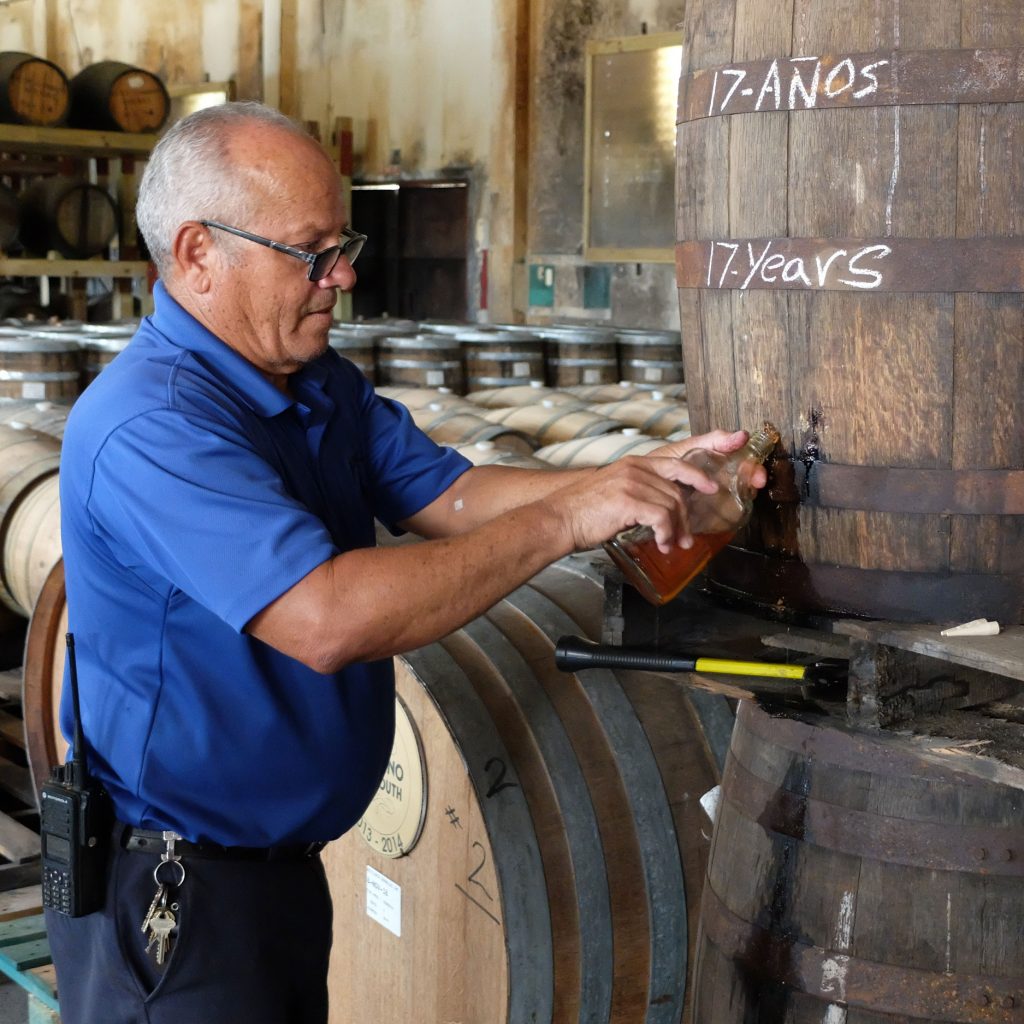
Passion and Connoisseurship
To Harris, “for a rum producer in the Caribbean not to have its own brands is a disservice to the rum-loving consumer.”
Serrallés echoed this sentiment. “We don’t sell aged rum [in bulk]. We are a bulk producer, but we’re not going to compete against ourselves. We know how freaking hard it is to make the rum—the working capital and all of those risks are heavy. As a policy, we’ll sell you the rum and you can do whatever you want with it. For us, the aging is very specific, it’s a lot of passion and know-how. Blood, sweat, and tears.”
That passion is being mirrored by consumers. “I think now there is an opening for Jamaican pot still rum, and it’s been bubbling up in Europe for quite some time, as sort of the single malt of the rum category,” Wondrich said.
“I think the breakout in whiskey connoisseurship has driven some people out of whiskey because, A, things are too expensive and, B, the stuff is too well known so it’s no longer fun for them. And now they are looking at other spirits and trying to build connoisseurship in other places. For a lot of people connoisseurship is about discovery and learning. I think it seems to be Jamaican rum’s turn to receive the treatment.” But like indie rock (or hot restaurants), “if the band gets too famous nobody is interested. Even the original fans aren’t interested.”
Something Given Up Is Coming Back
In the transition to homegrown but lighter rums competing on a global level, Wondrich observed, “a little something has to be given up, and some of that is the individuality of their traditions.”
“But what’s heartening to me is we’re starting to see some of that individuality returning,” he said. “There’s starting to be a market for more individuality in rums from all these diverse places. And, hopefully, we’ll see some of these traditions not only bring economic power to the countries that are making this stuff, but also bringing back some of their individual cultural traditions to the rum that goes into the bottles.”
Sterling agreed. “I think that there’s a lot of value in consumers’ minds behind that. We all love the idea of a craftsperson who has a vision, and wants to control that vision to produce something that is truly different and special.”
To Harris, this producer-owned rum is “the missing puzzle piece.” Hampden Estate’s branded blends signify both a return to tradition and the establishment of something new.

